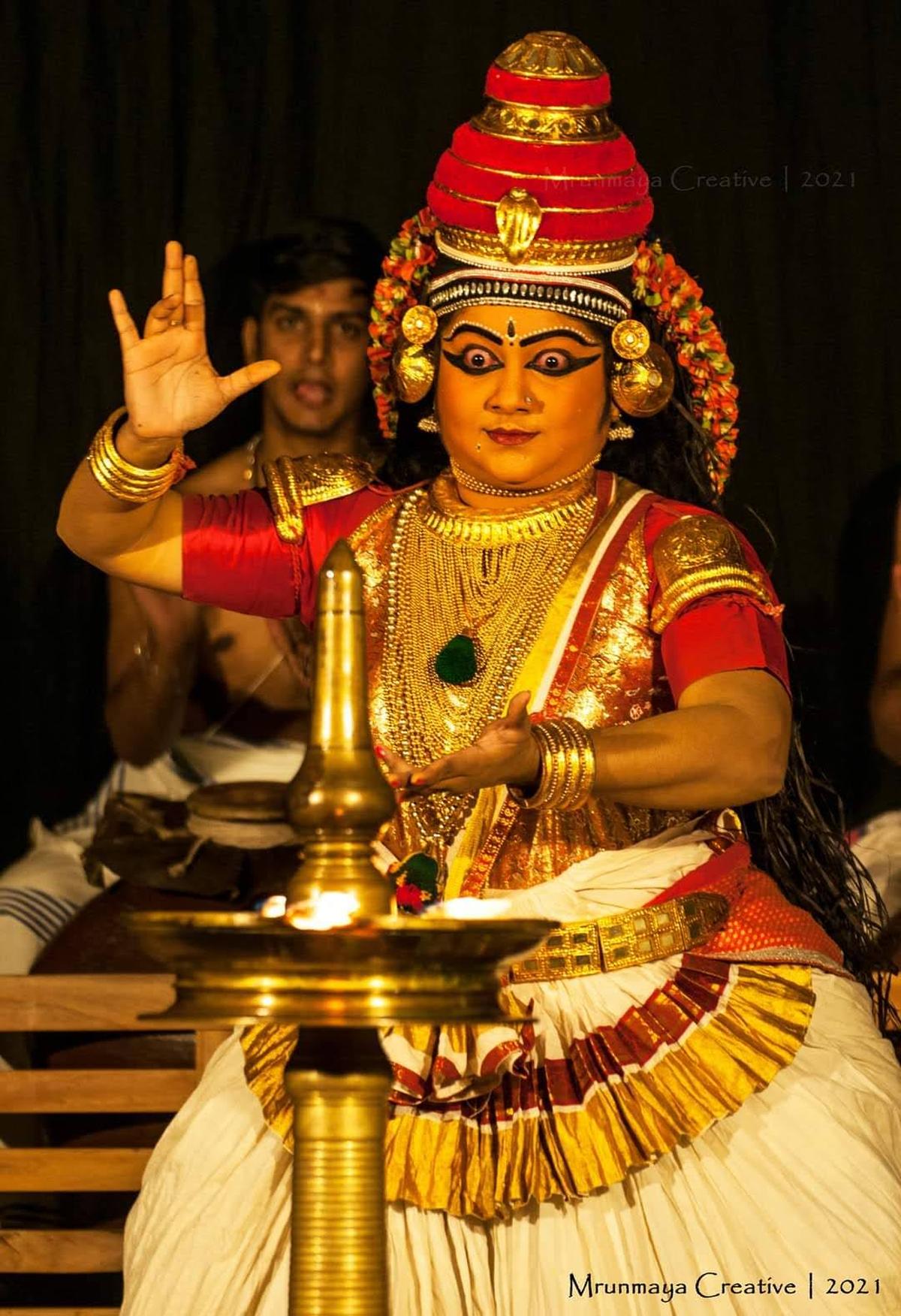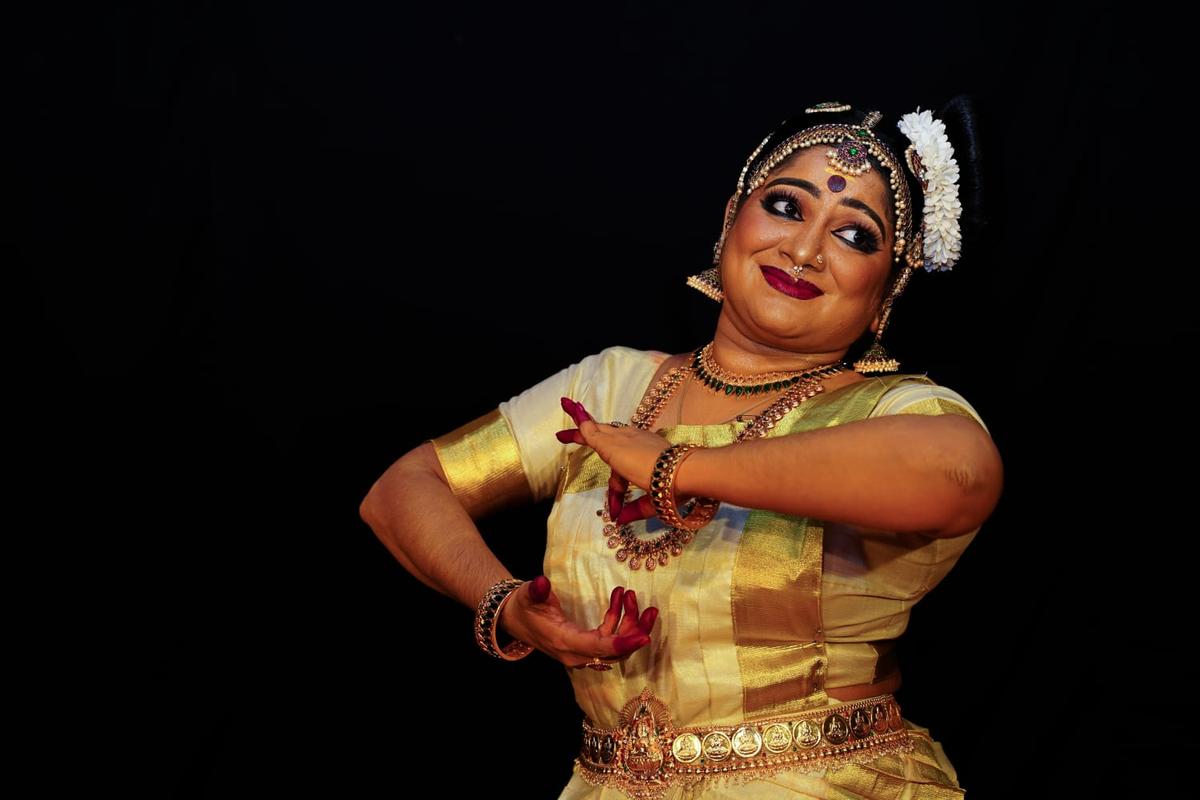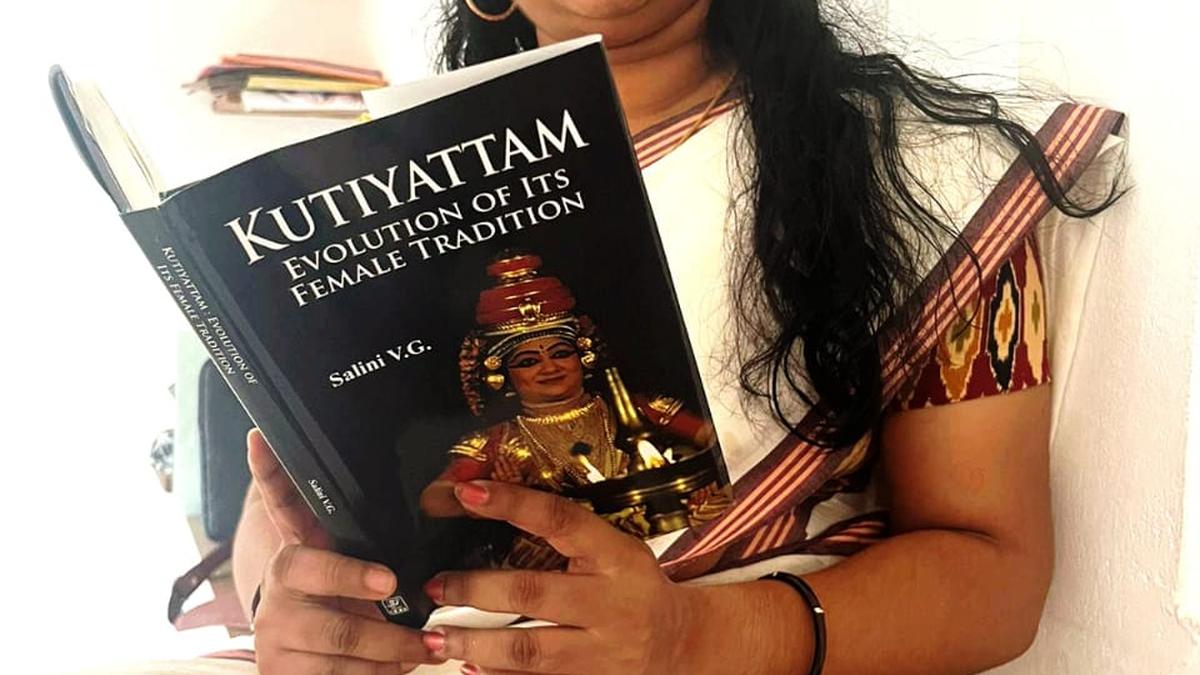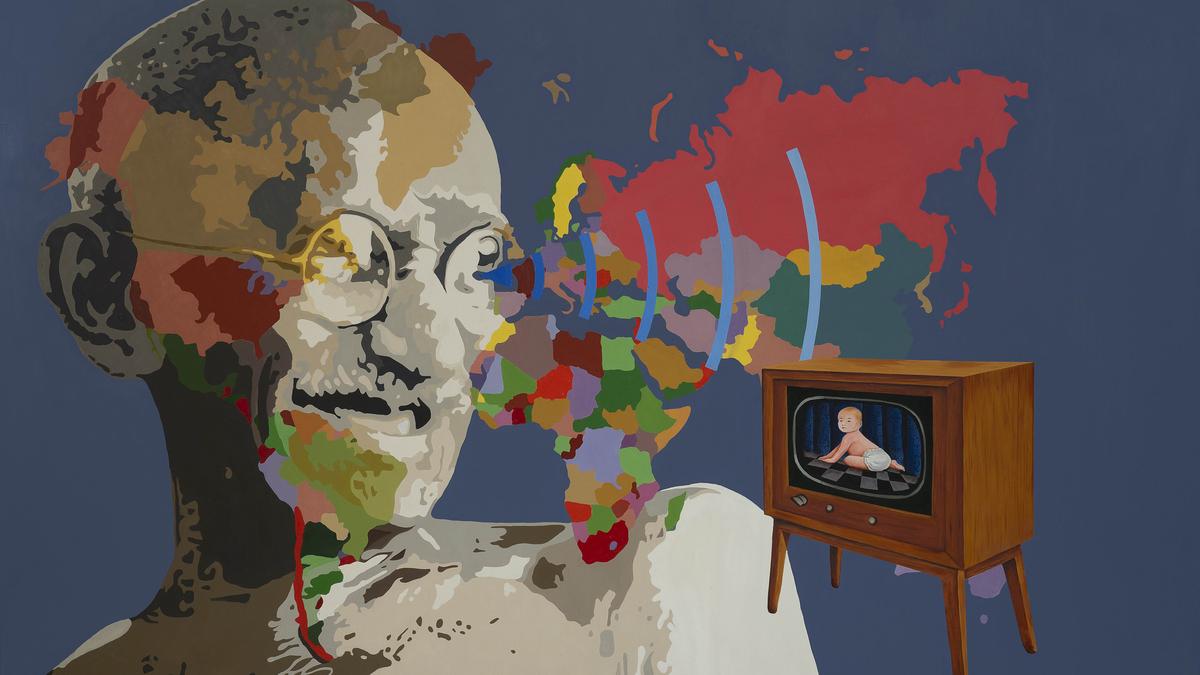Koodiyattam dancer Salini
| Photo Credit: Special Arrangement
Salini VG is as much at ease with words as she is on stage. When the Koodiyattam performer and Assistant Professor, English literature at Ottappalam NSS College, decided to do her Ph.D, she knew intuitively what she wanted it to be. “As a Koodiyattam performer, I have always been fascinated by the female narratives in the art form, and I wanted to do some serious study on the space Koodiyattam gives women,” she says.
Her exploration into the subject, however, took her beyond her doctoral thesis to writing a book, Kutiyattam: Evolution of its Female Tradition, which was published recently. “Though I have an insider’s perspective, there was so much more to study and understand. It was a deep dive into the nuances of the art form, its practitioners and techniques,” she adds.

Salini VG during one of her Koodiyattam performances
| Photo Credit:
Special Arrangement
While the book traces the female tradition through the history of the Nangiars (the nangiar koothu is an offshoot of Kutiyattam, performed exclusively by women), it also sheds light on the narrative practices of Koodiyattam. Salini devoted years of research for the project — going through manuscripts, watching live performances and interviewing eminent women performers, all of whom have contributed to the art form in their own unique ways.
A 2,000-year-old traditional art form, Koodiyattam always allowed women to perform female characters. “Women held important roles on and off the stage — as performers and narrators even during early times. Few other ancient art forms gave women such agency. This was much before Western theatre started thinking about employing women actors on stage,” she says. “Koodiyattam has women as external narrators, too,” Salini explains. “The invocatory slokas are delivered by them. These women have to know the story, the sequence, and the slokas — they form the backbone of the performance.”
Being veteran Koodiyattam artiste Kalamandalam Girija’s daughter gave her an advantage. “I grew up watching my mother and other artistes perform and I got an early peek into the world of mythical characters and theatrical language. My guru is my mother. Though she was a strict teacher, it is from her that I imbibed my passion for the art form. She is completely devoted to her art,” adds Salini. Girija, who was the student of Painkulam Rama Chakiar, who played a key role in the renaissance of the art form, has won several awards including the one from the Sangeet Natak Akademi and is known for her portrayal of male characters as well.

Salini at a Mohiniyattam recital
| Photo Credit:
Special Arrangement
Salini, who also learnt Mohiniyattam while growing up, enjoys performing it as well. “While I love Mohiniyattam, I look at Koodiyattam with a hint of reverence,” she says. Salini is the receipient of the Centre for Cultural Resources and Training scholarships for Mohiniyattam, and is an ICCR (Indian Council of Cultural Relations) empanelled artist of Koodiyattam. Her job as a professor has not clashed with her stage commitments, rather they complement each other, she says. “As an assistant professor, I am a resource person introducing and delivering lectures on Indian aesthetics and Rasa theory in academia,” she says.
A dancer/performer is constantly translating an experience through her eyes, face, breath, voice, and body, adds Salini. “Her whole being has to be present. If, for instance, she is looking at an imaginary mountain, the viewers have to be able to see the mountain through her – the peaks, the valleys and its entire form,” she says.
The book is for those who have an academic interest in Koodiyattam — it delves into the history, explains the rituals, the narrative structure, and includes excerpts from the interviews with contemporary performers. “Putting together all the information was an enriching experience,” says Salini, who, besides her own compositions, is working on a book on Nangiarkoothu.
The book, published by New Bharatiya Book Corporation, priced ₹500, is available on Amazon.
Published – September 29, 2024 09:51 am IST



.jpg)


